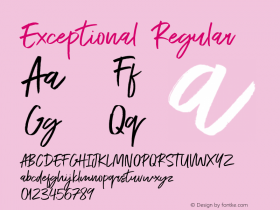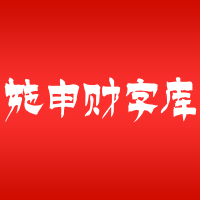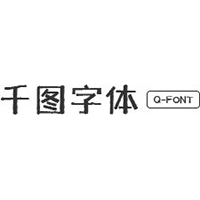Japanese Typography Writing System
How do the Japanese write, exactly? Many people think that the Japanese simply write in “Japanese”. The truth is, however, that they use a fusion of different font systems, and most of them are not so obvious. In the following, I provide an overview of the foundations of Japanese writing.
What does the Japanese writing system consist of?
Today's written Japanese comprises a number of components: elements of kanji, hiragana, katakana and the Latin alphabet; as well as Arabic numbers and Greek characters for mathematical symbols, punctuation and units of measurement. This means that a typical document could include as many as six different fonts. If you look at the Arabic numbers and punctuation marks as supporting elements, then a Japanese sentence consists mainly of kanji, hiragana, katakana and the Latin alphabet.

Kanji
Kanji is the Japanese name for the characters derived from Chinese. “Kan” is the Japanese reading of the Chinese “Han”, an age or dynasty that ranged from 206 BC to 220 AD (China itself was called “Han” at that time). “Ji” is the word for character. The result: “Chinese character”. The oldest existing records of kanji were found on tortoise shells from about 1500 BC, which were likely used for prayers. The font spread throughout East Asia. The oldest archaeological find for kanji in the form used for Japanese writing was a metal tool from the fifth century.
A dictionary from 100 AD contained1 9,353 kanji characters in China. There are approximately fifty-thousand kanji in Japan today. There is no official number, however, since new kanji are coming out all the time and the total number is constantly increasing. However, a level of about three-thousand kanji2 is sufficient to read a newspaper, for example. Nowadays, kanji are generally used for nouns, compound kanji words3, verbs and adjectives.

Hiragana
“Hira” means simplicity. Research suggests that hiragana characters represent a system that everyone can use as a simple, informal system of writing. Hiragana was developed from kanji to enable faster, simpler and continuous writing. (The Latin script evolved for similar reasons.) In today’s Japanese, this font is used to write verbs, adjectives, inflections, adverbs, auxiliary verbs and proper names. Like the Latin characters, hiragana did not simply appear suddenly but rather evolved into the present form over time.
In the heyday of hiragana4, there were some 1000 characters; this number went down to about three hundred in the eleventh century, however. Anywhere between one hundred and two hundred letters were used, depending on the person. Over time, the number of characters was reduced, unified and ordered. The final result: the current 46 basic hiragana characters5.


Katakana
The word katakana means “premature and unfinished font”.6 The so-called katakana developed from a part of the kanji in the eighth century and were initially used symbolically as abbreviated kanji for informal documents. Buddhist monks in Nara7 learned to use this condensed font at the start of the night century. They used the shorthand katakana to provide passages of complex characters in Buddist texts with a kind of phonetic transcription. To do so, they wrote the katakana in between the lines or even in the space between words. Initially, the characters differed from person to person. Over time, however, selection and adaptation took place, as was the case for hiragana.
Even then the symbolic form of the katakana was considered a non-organic, simple and incompletely developed writing system. Hiragana eventually became a writing font developed from kanji, while katakana represented a symbolic font that leaves out parts of a kanji to enable faster and simpler writing. Katakana are used, for example, in foreign words, foreign personal names, foreign place names,8 onomatopoeia (mimetic words that imitate sounds) and terminology. As in the case of hiragana, the number of katakana were reduced over time. Today there are 46 basic characters9.


Conclusion
As mentioned earlier, Japanese is a mix of different writing systems that each had different processes of development. The Latin script, however, also comprises various elements: the majuscule (borrowed from carved scripts used on monuments), the minuscule as handwriting and the Arabic numerals derived from ancient Indian fonts. If you keep this in mind, the Japanese writing system does not seem so unusual – rather, the development seems more like a historical matter of course. It can be said, however, that Japanese has an exceptionally tolerant writing system.
The fact that different sentence elements are written in different fonts has a major significance to Japanese. There are no spaces between the individual characters and words; the different fonts indicate the sentence structure. However, the different font types enable general spellings and nuances to come through. This enables diverse writing expression in the Japanese language.
-
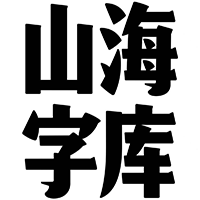 ShanhaiFonts
ShanhaiFonts
Brand:山海字库
Area:China

-
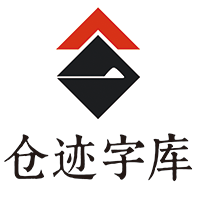 Cangji Fonts
Cangji Fonts
Brand: 仓迹字库
Area: China

-
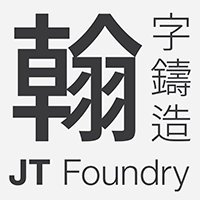 JT Foundry
JT Foundry
Brand: 翰字铸造
Area: Taiwan, China

-
 Handmadefont
Handmadefont
Brand:
Area: Estonia

-
·千图字体
-
 HyFont Studio
HyFont Studio
Brand: 新美字库
Area: China

- ·Iconic Transport for London logo undergoes subtle redesign
- ·Japanese Typography Writing System
- ·"Fantastic!" ad for Captain Fantastic & the Brown Dirt Cowboy by Elton John & Bernie Taupin
- ·Cher Got Sued For Font!
- ·Ad for Hello Dummy! by Don Rickles
- ·Antropofagia. Palimpsesto Selvagem
- ·Fonts Design of Childhood Memory
- ·Benetton identity redesign
- ·Amazon Releases Ember Bold Font for the Kindle
- ·How to Read a Painting by Patrick de Rynck




